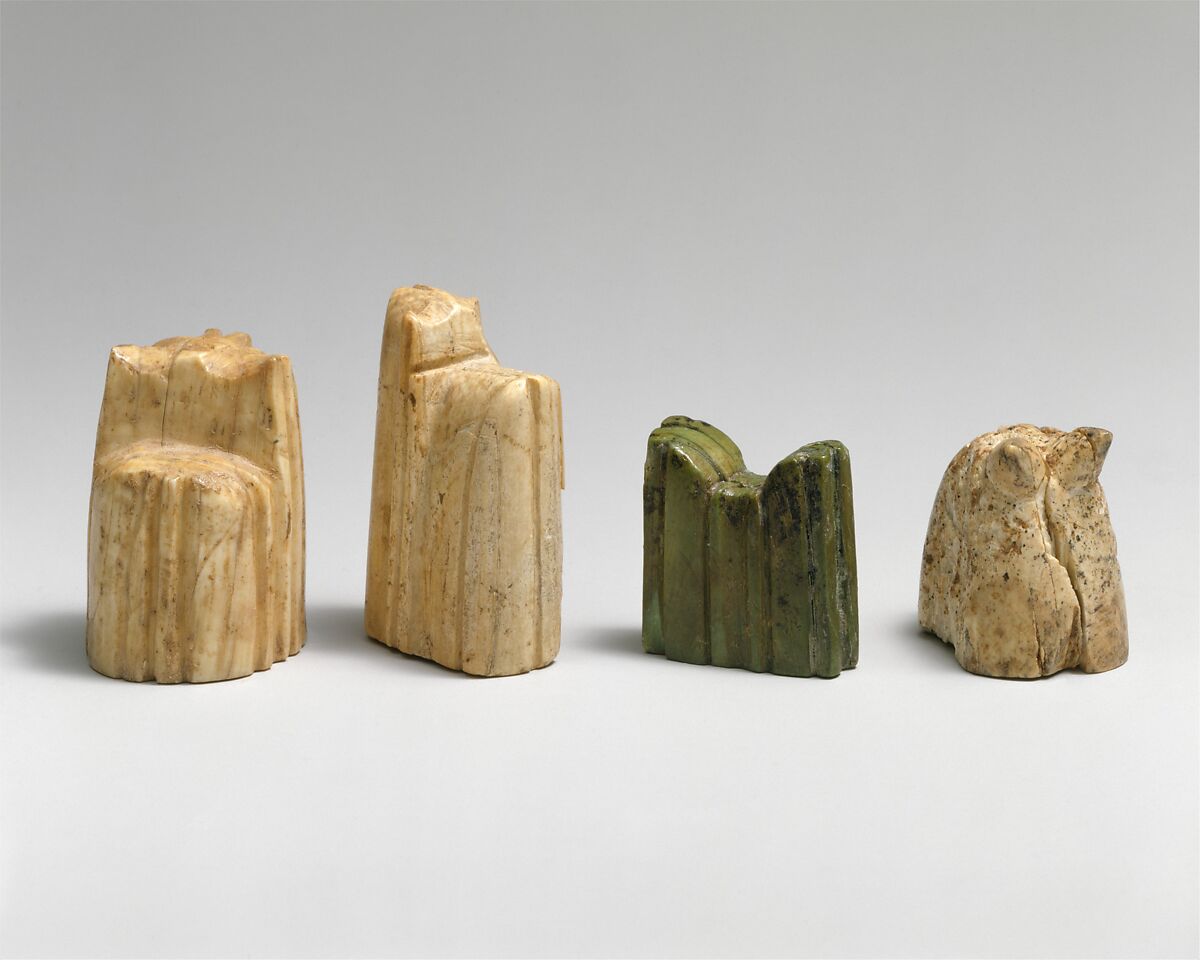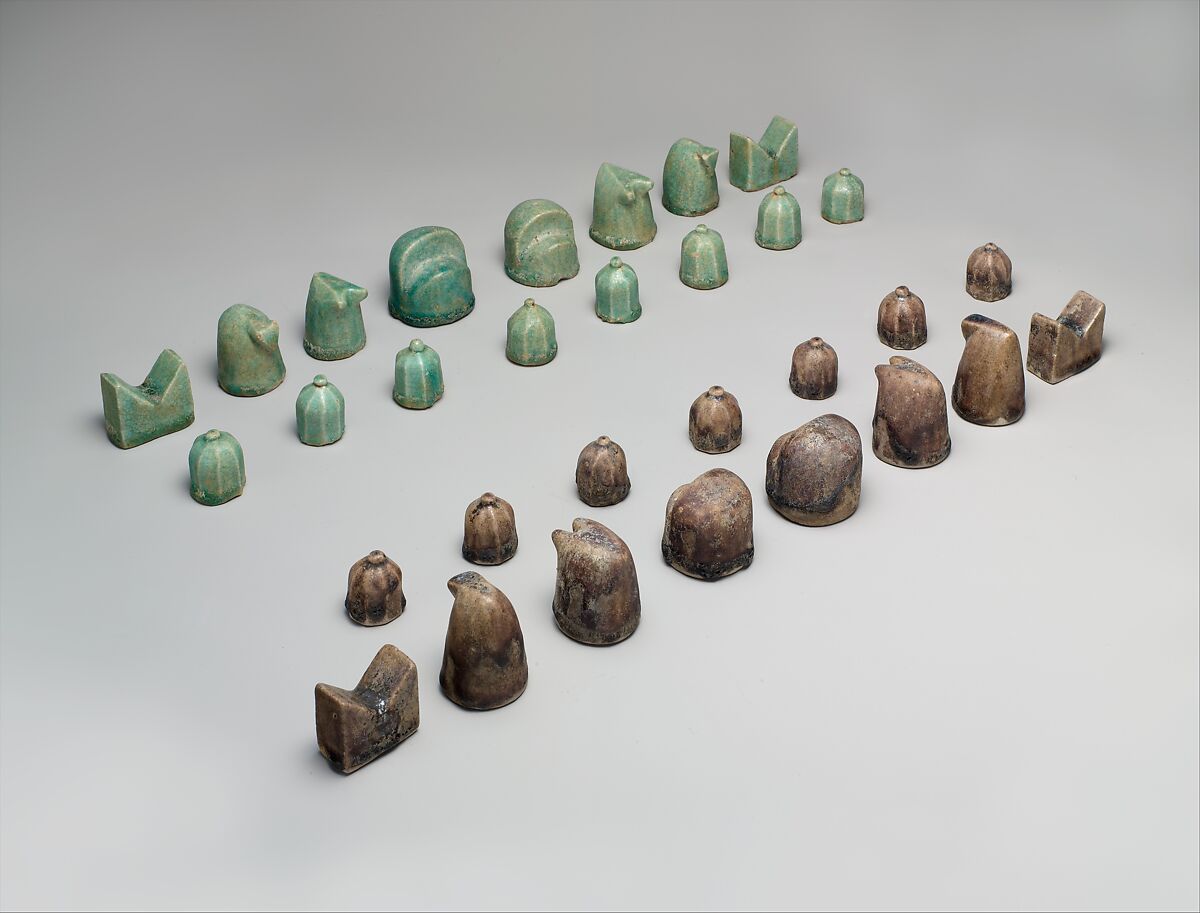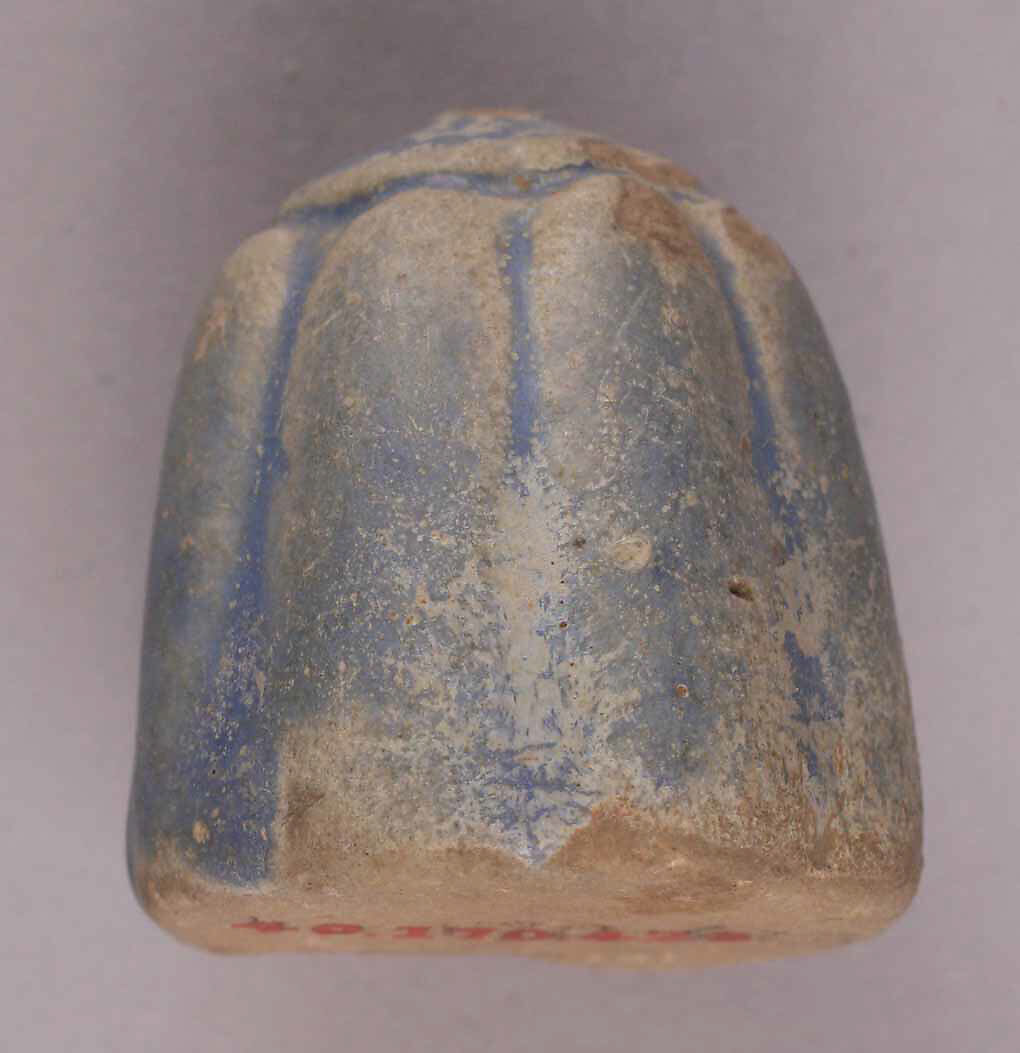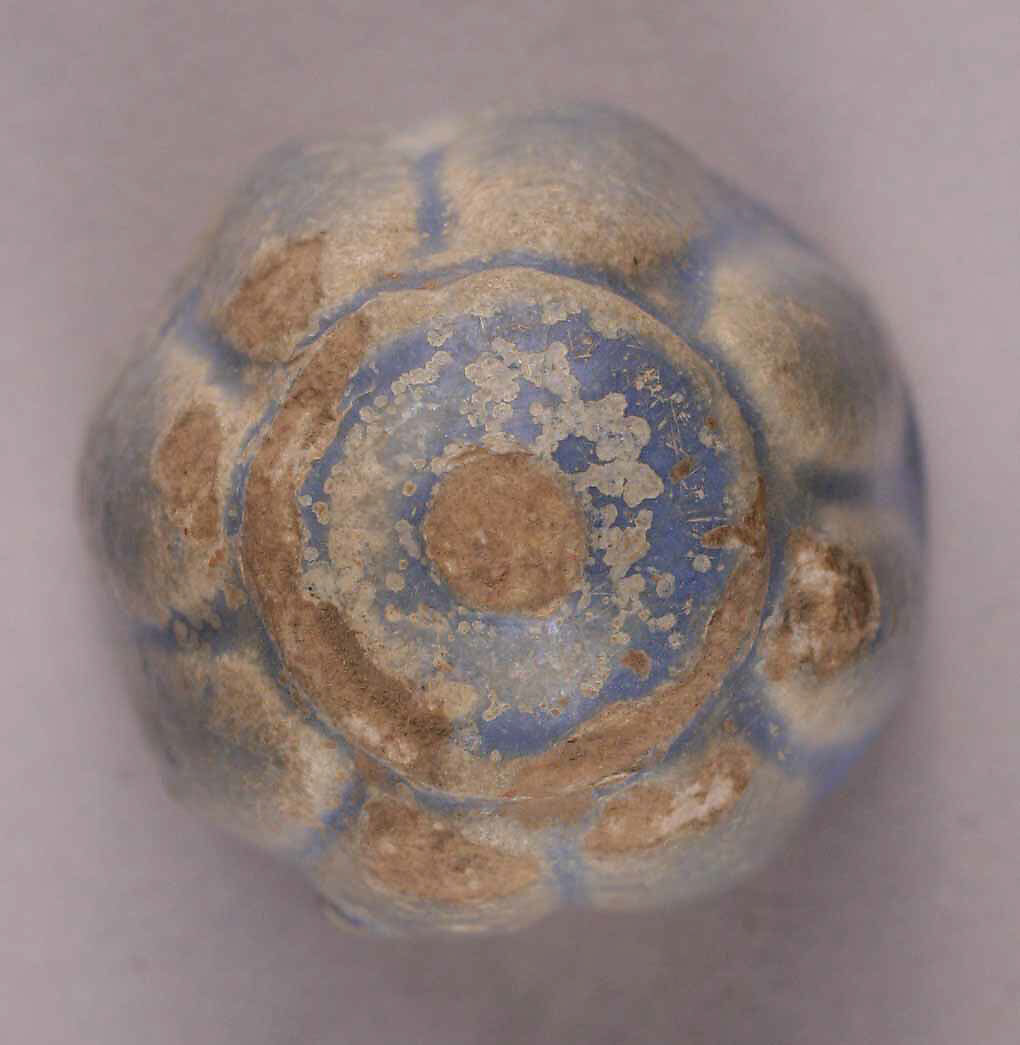Nishapur
Nishapur in today’s Iran was a vital city in the early and middle Islamic periods. Geographically located along the so-called « Silk routes », Nishapur was one of the main trajectories that connected Iran and West Asia Islamic lands with Central Asia and China.
Tepe Madrasa, Nishapur
9th-12th century. From excavations of the Metropolitan Museum, 1937-38, Rogers Fund. At Nishapur, archaeologists excavated between 1935 and 1948 a mound named Tepe Madrasa. Material: Ivory, carved. Dimensions : Height 2.8cm.
Source: The Metropolitan Museum of Art, New York, USA.
Nishapur, 12th Century
Pieces in abstract forms: the shah (king) is represented as a throne; the vizier (the equivalent of the queen) is a smaller throne; the elephant (bishop) has two tusklike protrusions; the horse (knight) has a triangular knob representing its head; the chariot (rook) is rectangular with a wedge at the top; and the pawns are faceted hemispheres with knobs. Stonepaste; molded and glazed. Dimensions: King 5.1 cm; Pawn 3.3 cm.
Source: The Metropolitan Museum of Art, New York, USA, Pfeiffer Fund.
Nishapur, Sabz Pushan
Chess piece excavated at Nishapur at the site of Sabz Pushan. This was a thriving residential neighborhood throughout the 9th and 12th centuries. Made from glazed pottery, the formal elements of this object, such as its eight-sided base, elongated domical shape, and the small knob on its top (which no longer remains), suggest that it likely functioned as a pawn.



